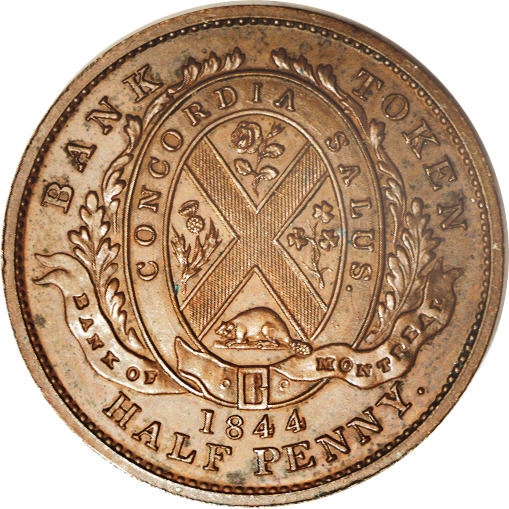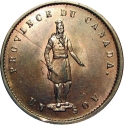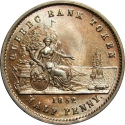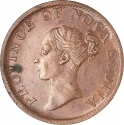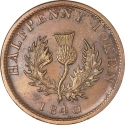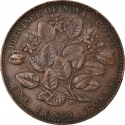You are about to finish your registration. Please check your mailbox (including spam folder). There should be a letter with a confirmation link. Check setting to make sure that your e-mail address is correct.
Send letter againDescription
The Front View halfpennies and pennies issued by the Bank of Montreal (est. 1817) from 1842 through 1845 represent the fourth attempt by the bank to introduce acceptable coinage into circulation. Its first attempt was the 1835 Bouquet Sous pieces, followed by the Habitant tokens of 1837 and the Side Views of 1838-1839.
After Upper and Lower Canada were joined in 1841, the government of the Province of Canada authorized the Bank of Montreal, as well as the Quebec Bank and the Bank of Upper Canada to produce tokens for the territory at various times from 1842 through 1857. The Bank of Montreal issued 1,000 pounds of pennies and the same amount of halfpennies in 1842. In 1844, the bank imported 2,000 pounds of halfpennies. Another 1,000 pounds worth were brought over in 1845, although these were all dated 1844. Just a handful of 1845 halfpennies, perhaps three or four, are known.
In his treatise on the tokens of the Bank of Montreal (1919), Eugene Courteau distinguishes between three main obverse groups with Tall, Heavy (Medium), or Small trees. These are paired with reverses showing the beaver with either a Short or Long nose.
Obverse

|
Depicts the original Bank of Montreal building with PROVINCE OF CANADA above and BANK OF MONTREAL below. ·PROVINCE OF CANADA· |
|---|---|
Reverse

|
Depicts the Montreal coat of arms designed by Jacques Viger in 1833 with a ribbon inscribed BANK OF MONTREAL below. The legend around reads: BANK TOKEN / 1844 / HALF PENNY. The coat of arms features the motto CONCORDIA SALUS (Safety in Union) and the motifs within the coat of arms represent the four main demographic groups that occupied the city — thistle for the Scotch, rose for the English, shamrock for the Irish, and a beaver for the French Canadians. BANK TOKEN |
| Edge |
